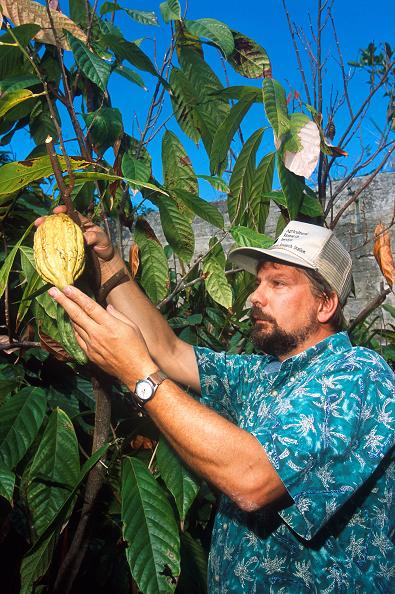Among other things, IBM is a partner in this project, which will provide computing power.

In recent years, the global cocoa industry has been dealing with serious diseases that cause the growers of cocoa plantations in West Africa and South America huge losses estimated at about 700 million dollars every year and more than 200,0000 people worldwide have lost their jobs because of this. According to estimates, there are around 6.5 million growers and workers in the cocoa industry in the world.
To fight the disease problem, IBM, the candy giant Mars and the United States Department of Agriculture have teamed up and they will collaborate in analyzing the complete genetic structure of the cocoa plant. Deciphering the genetic sequence of cocoa will be a significant step on the way to the cultivation and hybridization of new varieties of cocoa, which will offer larger crops, higher resistance and perhaps also an improvement in the quality of the cocoa beans, which are the main ingredient in all chocolate. The project will be financed by the chocolate manufacturer Mars, whose annual sales amount to about 22 billion dollars a year.
The new collaboration will allow farmers all over the world to plant higher quality cocoa seedlings - and enjoy healthier and larger harvests, thanks to improved properties of the plants that will be able to deal better with diseases and with conditions of drought and dryness.
Stabilizing cocoa crops will help, among other things, to protect the economy and growth in a number of countries in Africa, which supply about 70% of the world's cocoa consumption. The results of the research will be available for use by the general public, free of charge, within the framework of the intellectual property resources program for the field of agriculture, which supports innovations in agriculture for humanitarian purposes and for small-scale commercial and business purposes.
The collaboration between IBM, the US Department of Agriculture and the Mars company is expected to last for about five years, until the full genetic mapping of the cocoa plant is completed. The researchers will use the processing capabilities of the IBM supercomputers at the Thomas Watson Research Center in Yorktown - New York, in order to run computational biology applications that will enable the development of the detailed genetic map and the assembly of the complete genetic sequence of the cocoa plant.
IBM's current project fits into IBM's overall commitment to support sustainable growth in Africa and investment in the continent's development. Deciphering the genetic sequence of plants used to produce agricultural crops is a critical step on the way to a better understanding of the factors that affect crops, and to improving these crops.
A complete identification of the genetic structure of the plant makes it possible to save and shorten the long processes of hybridizing different varieties, based on trial and error. With the completion of the process of deciphering the genome of the cocoa plant, scientists and farmers will be able to better identify the genetic structures that allow certain hybrid varieties to produce larger crops, display higher resistance to drought conditions or against pests, or even develop new flavors of chocolate already at the plant level. In the future, it will be possible to hybridize and cross between plants that carry the desired genes - and produce a new selection of cocoa plants, in a natural process that is no different from the one in which farmers have been working since time immemorial, and without the need to resort to genetic engineering and the implantation of foreign genes (trans-genetics) in the cocoa plants.
The cocoa plant has so far received relatively little research compared to other agricultural plants such as corn, wheat or rice. Although cocoa is not grown in the United States - for every dollar of cocoa imported to it, American agricultural produce is sold for two dollars, which is incorporated into the final product for which the imported cocoa is intended.

One response
And what about the amoeba genome?